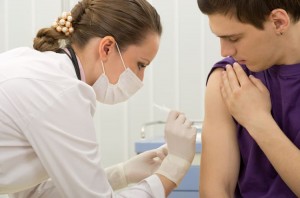Vaccines Provide Hope in COVID-19 Fight
The coronavirus disease COVID-19 has killed more than 1 million people and infected more than 60 million people around the world. But, hope may be just around the corner, in the form of vaccines. Vaccines are special medicines that can help make a person immune to a particular disease. Vaccines have been successful in fighting many other diseases, including chickenpox, meningitis, and yellow fever.
In late November, the companies Pfizer and Moderna each applied for emergency approval from the United States Food and Drug Administration (FDA) for their COVID-19 vaccines. The two companies are among dozens of drugmakers that have worked tirelessly to develop a vaccine against the deadly virus.
Most vaccines are administered into the body by injection. A vaccine contains substances that stimulate the body’s immune system to produce molecules called antibodies. The immune system uses antibodies to fight against germs that enter the body. Antibodies produced in response to a vaccine can protect a person who is exposed to the actual disease-causing organism. The process of protecting the body in this way is called immunization.
Pfizer and Moderna began clinical trials in July. During these trials, participants were given either the vaccine or a placebo. A placebo is a substance that contains no active ingredient. Comparing infection rates in subjects who received the placebo with those among subjects who got the vaccine can help determine if the vaccine is effective. In the Pfizer and Moderna clinical trials, half the participants were given a placebo of salt water, and half were given the vaccine. The researchers then waited to see who might get sick. The results were very promising—both vaccines were about 95 percent effective in preventing COVID-19. By contrast, commonly administered influenza vaccines (known as flu shots) are 40 percent to 60 percent effective.
Vaccines are one of the most powerful tools in modern medicine. They have nearly or completely eliminated several diseases. For instance, Edward Jenner, a British physician, introduced vaccination in 1796 as a preventive measure against smallpox. By the late 1970′s, smallpox vaccination had wiped out the dreadful disease. In the United States and many other countries, disease has been greatly reduced by widespread childhood immunizations. In 1952, for example, more than 21,000 cases of the paralytic disease polio were reported in the United States. By the end of the 1900′s, fewer than 10 cases per year were reported. More than 95 percent of children in the United States receive all their recommended immunizations by the time they enter school.
In many cases, administration of a COVID-19 vaccine will be voluntary. But, it will be a while until everybody who wants a vaccine can get one. Once approved, the vaccine—from Pfizer, Moderna, or other companies—will likely first be available to health care workers, frontline workers (workers likely to encounter the disease), and people who are vulnerable to the virus, including the elderly and people with such risk factors as obesity or diabetes. Some of these people may receive the vaccine by the end of 2020. But, most people will have to wait until the spring of 2021.



